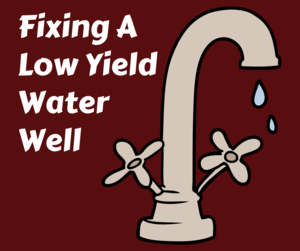CALL TODAY 1-800-441-6281
CALL TODAY 1-800-441-6281

Emerging Contaminants and Your Home's Water Filtration System
Whether you draw water from a private well or are on a municipal water system, ensuring your water is safe to drink is an important concern, but one that many of us often don’t think about. Over the years, the U.S.
Environmental Protection Agency has evaluated and adjusted the levels of contaminants it deems safe for human consumption, based on new studies. Because these studies reveal new information each year, the EPA has developed a new category, “emerging contaminants,”to address contaminants that are still being evaluated.
What Are Emerging Contaminants?
Contaminants found in drinking water usually fall into two categories: Those that have an adverse effect on people’s health and those that affect only the taste, appearance or odor of the water, known as aesthetic effects.
There are, however, some contaminants which we do not know for certain what the health effects are. Emerging contaminants are those in which evidence of health effects has not yet been established due in part to the trace levels at which these compounds are currently being detected. This includes prescription and over-the-counter (OTC) drugs, new types of herbicides and pesticides, chemicals used as flame retardants, and detergents. These contaminants have been found at trace levels in drinking water, including recently in Portsmouth where a well servicing the Pease International Tradeport was shut down due to the presence of PFOS, a type of perfluorochemicals used in flame-retardant foam.
DO WATER FILTERS PROTECT AGAINST EMERGING CONTAMINANTS?
A national standard has been established in the United States to verify the ability of a water treatment system to remove up to 15 emerging contaminants, including certain drugs, pesticides, flame retardants and detergents, called the NSF/ANSI 401: Emerging Contaminants/Incidental Compounds.
NSF/ANSI 401 filters include several types of point-of-use (POU) and point-of-entry (POE) systems, from pitchers and faucet-mount filters to refrigerator and countertop units. These filters are usually a kind of reverse osmosis system that use a carbon medium to remove various impurities from the water. In some systems, the contaminants that are large enough will be trapped in the pores of the filter. In others, the contaminants stick to the surface of the filter media. Eventually, the filter media becomes filled with contaminants. The filter is then unable to continue filtering out the contaminants, or in the case of mechanical filtration, the pores of the filter become so clogged with debris that water is unable to move through the filter effectively.
It’s easy to spot a tired filter if the water won’t flow through, however, it's not as easy to tell when the surface area of the filter media has become full and needs to be changed.
SO HOW OFTEN SHOULD WATER FILTERS BE CHANGED?
Each type of filtration system has its own recommended filter change cycle. When you purchase your system, make sure to look in the manual for the “service cycle” or ask the person installing it for the information. The service cycle may be for a certain amount of time or for a specific number of gallons. To make sure the filter continues to reduce contaminants, replace it according to the manufacturer’s recommendations.
It is also important to buy the right replacement cartridges. Two cartridges may look similar, but even the smallest size difference could allow water to go around the cartridge rather than through it. Non-certified filter cartridges may be less expensive, but they also may not be of the same quality as the manufacturer's suggested replacement. The lower cost is not worth the risk of a possible introduction of impurities into the water because of a low-quality product. To ensure your water treatment system is performing effectively, use the proper replacement cartridge and change your filter at the recommended interval.

